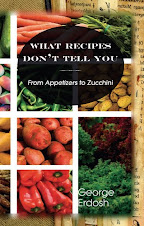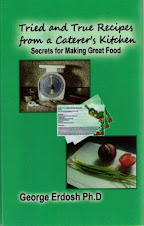Cilantro

Saturday, January 18, 2014
HOME-MADE PASTA?
An old woman with a wooden bowl wide as a kettle
drum, equally large sieve and a number of smaller equipment arrived to our
house every fall to prepare a variety of pasta for the year. She stayed a full
day in the basement and by the end of the day a dozen different kinds of pasta
were drying on many sheets spread out throughout our house. The next day they
were all ready for storage. Today few would consider preparing pasta such as
orzo, egg noodles or lasagna by hand. Not only it’s hard work but it takes serious
experience.
Even if you own a pasta machine, homemade pasta
turns out acceptable only if you use it regularly and learn the technique.
Pasta dough has a way of refusing to obey you to be coaxed into pasta shapes. I
watched an experienced chef preparing pasta for the menu scheduled for that day,
and it took him hours. First he prepared the dough and hand kneaded it
thoroughly. After a period of resting to let the gluten relax, he passed the
dough through his pasta machine several times, using a large opening. Then he
folded a third of the long ends of the rectangular dough over and one more time
over the last third. Now he had three thirds folded into one.
He reduced the pasta machine opening and passed
the dough through several more times. He repeated this process again and again,
eventually having the thinnest opening in the machine producing a pasta thin as
corn tortillas. But this is not the pasta yet. He let this sheet covered with a
moist towel to dry for a few hours then using a chef knife, cut it into long
thin strands of pasta, now ready to cook. How long the drying process is where years
of experience come in.
Pasta dough is simple: flour and water, no salt.
Fresh or dehydrated yolks or whole eggs for egg pasta.
This is not for every home cook. It’s long,
tedious and the results are questionable (I know from experience).
You can also buy the perishable fresh pasta at the
market. Is it better than inexpensive dry pasta? In my experience, it is not.
In my kitchen it’s the dry pasta that reigns, and
I always have some dozen varieties in the pantry. For a good pasta, should you
buy the more costly Italian imports? In Italy they cannot grow the hard winter
durum wheat essential for good pasta. Instead they import the best durum wheat
from the winter crop in North Dakota, Minnesota, Montana and adjacent Canadian
provinces. After packaging in Italy and shipping, you find the expensive
Italian pasta on the store shelves. Any good brand of domestic pasta, made from
the same wheat, is your best choice.
Read the label to make sure the pasta was made from durum
wheat—that’s all you need for good pasta. Two more names you are likely to come
across reading the ingredient lists on pasta packages: semolina flour and
farina flour. The best pasta are made from semolina flour which is the inside
part of the durum wheat grain, milled slightly coarse, slightly gritty,
resembling a fine cornmeal. Farina flour is a similar slightly gritty flour but
milled from hard wheat (bread flour), not durum wheat. Good-quality shaped
short pasta (like macaroni or alphabet soup pasta) is made from semolina. In
long pasta products they may mix semolina and farina flours and you’ll still
get a good product.
Unless you use your pasta machine often and gain
experience, stick with good domestic pasta for a good pasta dish. Don’t
overcook and don’t undercook: just to perfect el dente.
Subscribe to:
Post Comments (Atom)




 Stumble It!
Stumble It!











No comments:
Post a Comment